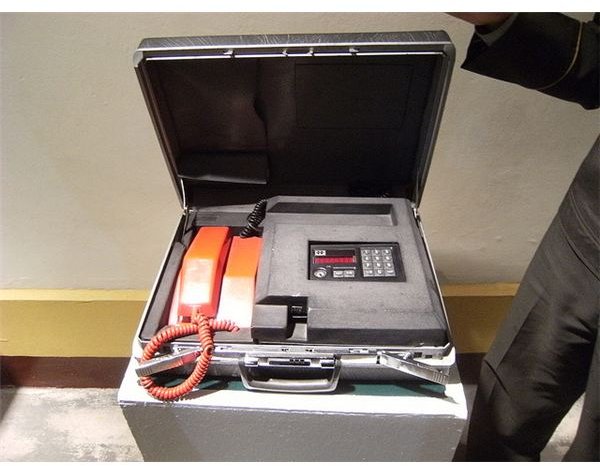When Was the First Mobile Phone Invented?
The First Mobile Phone
When was the first mobile phone invented? The company given the first mobile telephone license (AT&T), had many years of toing and froing with the Federal Communications Commission (FCC), before anything like we know as mobile phones first started to appear.
The original mobile telephone license was granted to AT&T as early as 1946, but most sources put the invention of the first mobile phone as 1947. These initial phones were car based, and transmission was possible due to a single mast designed to cover a single metropolitan area. This is where the many years of wrangling with the FCC came about. System capacity became a big issue, and AT&T came up with many proposals over the years to either be denied by the FCC, or simply the FCC chose not to act. In the early days of mobile technology, the FCC opted instead to dedicate UHF channels to TV, rather than allowing any allocation for mobile phones at all.
Users of these early car based mobile phones, had to search manually for a free MHz band before they could place a call. They were then operated in much the same way as a walkie talkie, with only one person being able to speak at a time, and you had to push a button each time you wished to talk - known as a push-to-talk phone. The weight of this first mobile phone was around 76 lbs (34kg), so it’s no wonder they were left in cars!
The Battle for Mobile Telephony
Wrangling over the allocation of mobile technology between AT&T and the FCC continued throughout the 1950s and 1960s. In
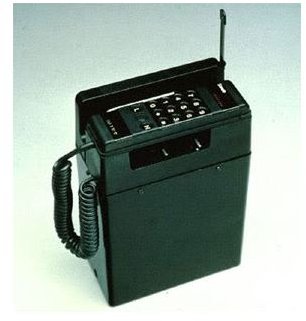
1968 the FCC heard of AT&Ts proposal to adopt the cellular system. It took three years of presentations but finally in December 1971 AT&T formally filed their plans to use this technology.
The technology continued to improve throughout the 1970s with Bell Labs refining the cellular telephone technology system. Even as recently as 1976, the New York area was only able to handle 543 mobile phone users at a time, with many thousands on the wait list, so system capacity was still a big issue.
Eventually the FCC made allocations for experimental cellular phone systems to be put in place, and granted experimental systems to Motorola in Washington DC, and to AT&T in Chicago.
in 1983 the FCC allocated the cellular system permanently, and AT&T became the first commercial cellular operator in the US. Cellnet and Vodafone were granted cellular networks in the UK, in May of the same year.
History of Mobile Phones - 1983 and Things Get Interesting
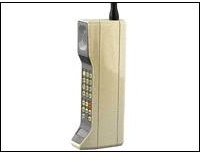
The history of mobile phones really starts to get interesting after 1983, when cell phones definitely become
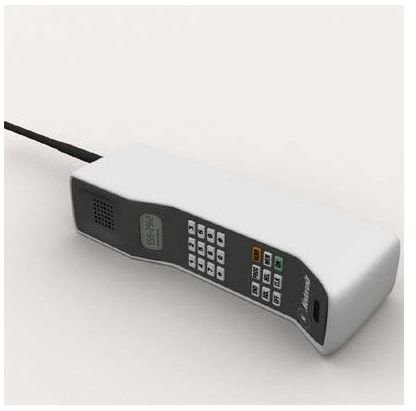
more mobile.
1985 sees the introduction of the first shoulder phone (similar to the ones pictured here), although as the batteries for these still weighed in at a pretty hefty 44 lbs (20kg) or more, they were still unsurprisingly mainly used in cars.
With the release of the film Wall Street in 1987, and the iconic image of Michael Douglas with his mobile phone, every Wall Street wannabe, and London yuppie just had to have one, resulting in an amazing surge in popularity.
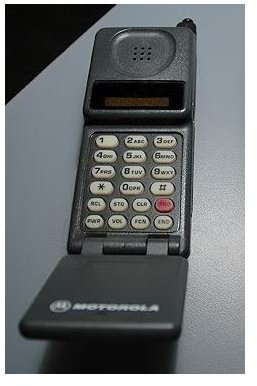
By 1989, phones became truly mobile, and flip phones like the iconic Motorola MicroTAC became a revolutionary product. Interestingly, although at this point in the history of mobile phones, the phones themselves did not need an external aerial, a fake one was included on the MicroTAC anyway, as research showed consumers expected it.
There became a Global Standard for Mobiles (GSM) in 1991, followed in 1993 by the first all-digital network in the world. Of course the real revolution of mobile phones came about in 1994 when the Short Message Service (SMS) was launched, which enabled short text messages to be sent between mobile phones - where would we be without it!
The 1990s to Mobile Phones Today
Nokia phones seemed to be everywhere in the 1990s, the model of choice being the neat little Nokia 3210, which many people fondly

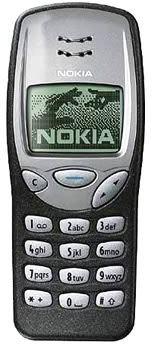
remember as their first mobile phone. Or maybe your preference was the Nokia 9000 communicator, which opened up to reveal a full QWERTY keypad and a large screen. These are things we take for granted on today’s smartphones, but in 1996 it was a revolutionary idea, only hinting at the world of mobile phones we had yet to enjoy.
In 1998 more mobile phones were sold worldwide than the sales of PCs and cars combined. The following year saw the introduction of phones that were able to send e-mails, and use the web.
Phones continued to develop in this way, into what we now recognize as smartphones. It is hard to believe that it was as recently as
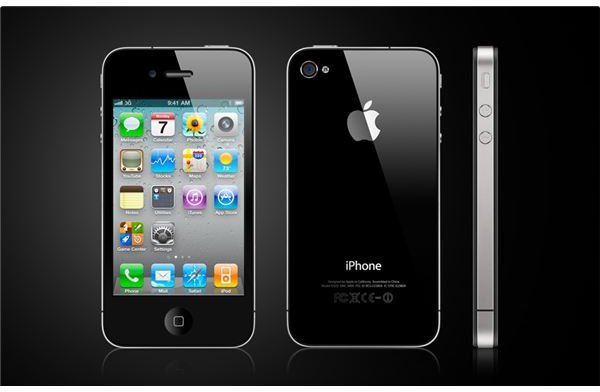
2007 when the first iPhone was launched, and along with it the idea of apps. Today, the iPhone 4 is an iconic phone for users on a worldwide scale, although our choice of smartphones has never been greater.
If you need any further convincing of how far we’ve come in the last 26 years of mobile phone history, compare the weighty battery needed to power the mobile phones of 1985 with the weight of an iPhone today. The total weight of an iPhone 4 being 4.8 ounces, means you could carry around 146 iPhones, for what was used to power just one phone in 1985 – remember that the next time you complain about the bulk of a cell phone!
References
- “Mr. Watson. Come Here. I need you.”: Bell and the Invention of the Telephone, https://bnrg.eecs.berkeley.edu/~randy/Courses/CS39C.S97/telephone/telephone.html
- Bronx Community College - https://www.bcc.cuny.edu/CenterforTeaching/ContinuumofGreatness/SamuelMorse.pdf
- Phone History - https://www.phonehistory.co.uk/mobile-phones-history.html
- Wall Street, IMdB - https://www.imdb.com/title/tt0094291/
- iPhone 4 spec, Apple - https://www.apple.com/iphone/specs.html
- “Mobile Phones: The First 25 Years”, University of Salford, https://www.cntr.salford.ac.uk/comms/25yrsofthemobile/survey.php
Image credits:
- Old car phone: Jushuaheller/Flickr
- 1980s car phone - DYC77/Photobucket
- Shoulder phone (upright): awesome_eighties/photobucket
- Shoulder phone (laid down): anonymous696969/photobucket
- Motorola: Jimmy_hoffa/photobucket
- Nokia 3210: balong_urang/photobucket
- Nokia 9000: balong_urang/photobucket
- iPhone 4: https://www.apple.com/iphone/gallery/
